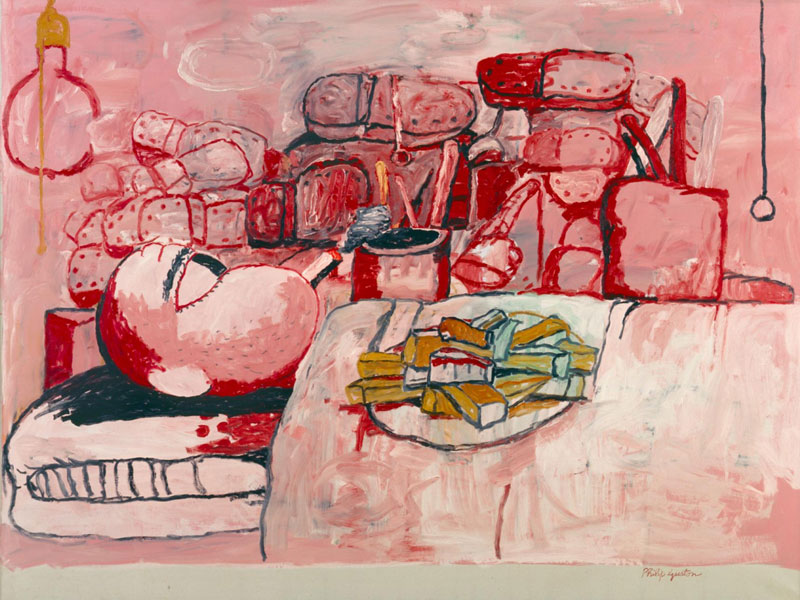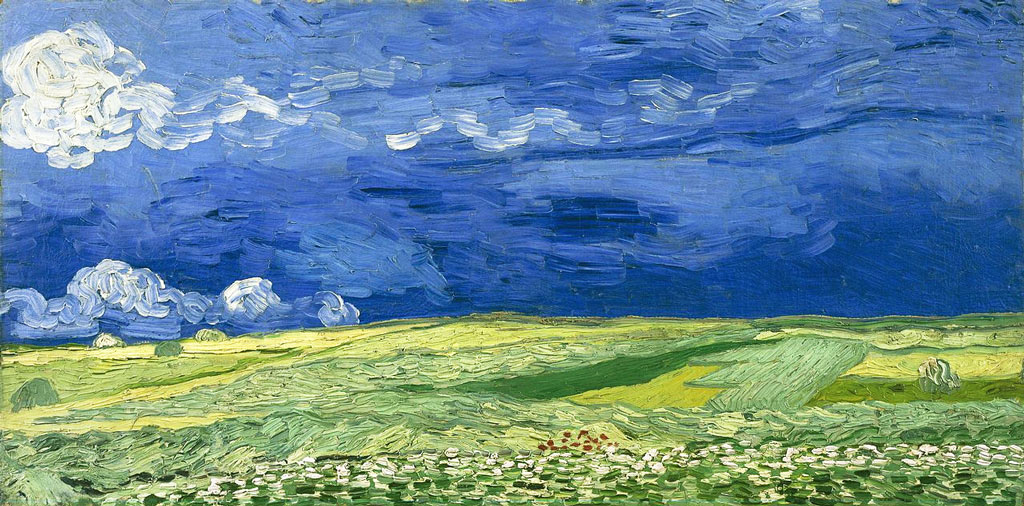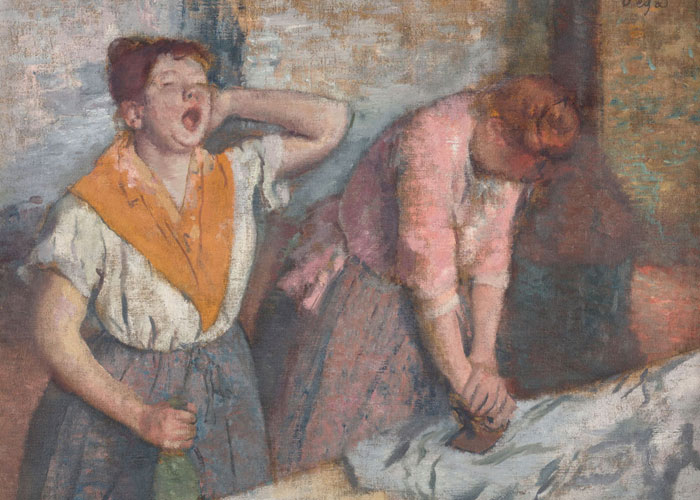Philip Guston, an American in London

From October 5, 2023, through February 25, 2024, the Tate Modern presents “Philip Guston Now”, the first major retrospective on the artist in the UK in nearly 20 years.
Source: Tate Modern · Image: Philip Guston, “Painting, Smoking, Eating”, 1973. Stedelijk Museum, Amsterdam © The Estate of Philip Guston
“Philip Guston Now” comes to London following its run at the Museum of Fine Arts, Boston, where it was on view from May 1 through September 11, 2022; at the Museum of Fine Arts, Houston from October 23, 2022 to January 15, 2023 and to the National Gallery of Art, Washington, from February 26, 2023 to August 27, 2023.
Originally scheduled to start its run in June 2020, “Philip Guston Now” was postponed following the murder of George Floyd in May 2020. Several of Guston’s paintings depict, rather cartoonishly and in no way apologetically, hooded Ku Klux Klan-like figures, and the fear that these paintings would be misinterpreted at a time when social protests were spreading across the United States led to the exhibition’s postponement, a decision that was strongly criticised by artists and academics. Guston’s daughter pointed out in an interview that the paintings, far from defending white supremacy, “were about white culpability”, including that of the artist himself.
In a press release, the Tate Modern explains that “for over 50 years, artist Philip Guston restlessly made paintings and drawings that captured the anxious and turbulent world he was witnessing. Born in Canada to a Jewish immigrant family, he grew up in the US and eventually became one of the most celebrated abstract painters of the 1950s and 1960s, alongside Mark Rothko and his childhood friend Jackson Pollock. His early work included murals and paintings addressing racism in America and wars abroad. During the social and political upheavals of the late 1960s, Guston grew critical of abstraction, and began producing large-scale paintings that feature comic-like figures, some in white hoods representing evil and the everyday perpetrators of racism. These paintings and those that followed established Guston as one of the most influential painters of the late 20th century. Guston was a complex artist who took inspiration from the nightmarish world around him to create new and surprising imagery. This exhibition explores how his paintings bridged the personal and the political, the abstract and the figurative, the humorous and the tragic.”
Follow us on:


